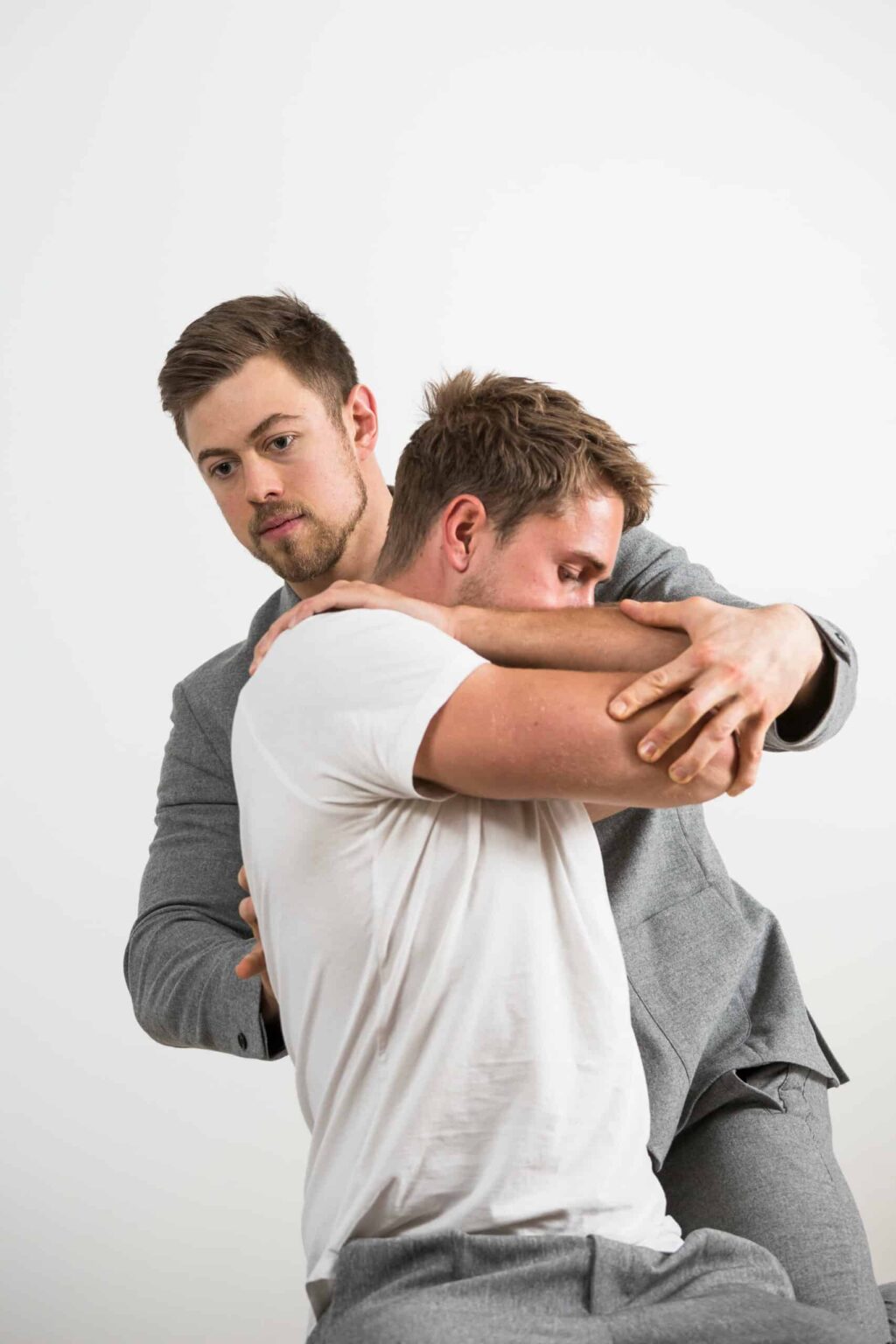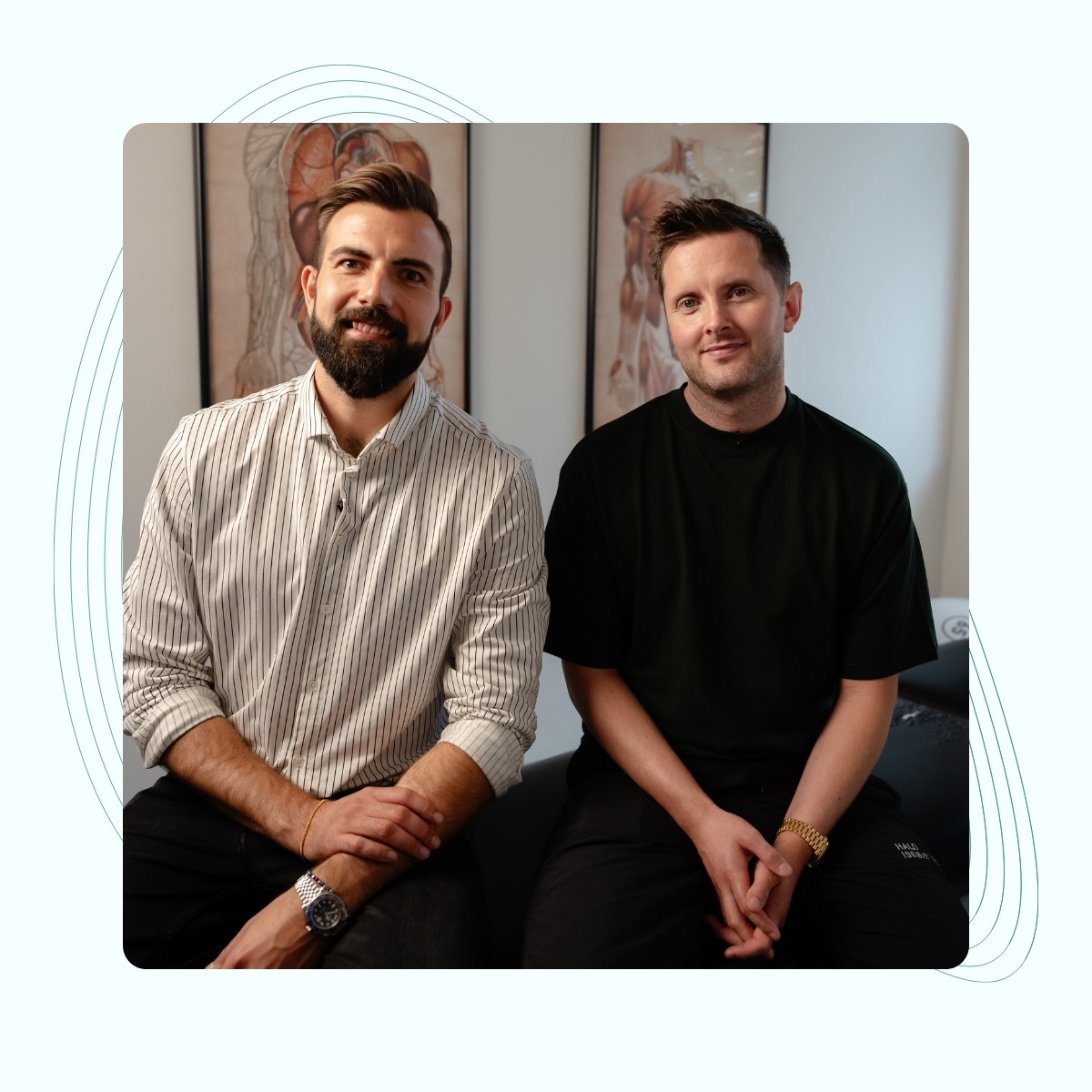We treat
Scoliosis and crooked back
Learn more about scoliosis and curved back on this subpage.
Scoliosis
Scoliosis is a relatively common condition. Up to 3-5% of all children have scoliosis. However, scoliosis is not always symptomatic and only around 0.4% need treatment due to discomfort and pain. The tendency is much greater in girls or up to ten times as frequent. Scoliosis symptoms usually appear between the ages of 10-16, but a rule of thumb is that the sooner symptoms appear, the greater the likelihood that the curvature will become large. Scoliosis can progress with age, but after puberty the curvature no longer develops. However, worsening of the curvature in the back can be seen if the degree of curvature exceeds 30 degrees.
Jump to section [Vis]
What is scoliosis?
Scoliosis is a term for a pronounced curvature of the spine (crooked back / curved back). This curvature occurs in the frontal plane, meaning that when viewed from behind, the spine curves to the sides (either to the right or left). In the spine, there is always a primary curvature or curve with several smaller compensatory curvatures.
Types of scoliosis
There are two primary types of scoliosis.
-
- An S shaped scoliosis curvature/curve that occurs from the upper part of the thoracic spine, opposite curvature/curve in the transition from the thoracic spine to the lumbar spine again followed by opposite curvature/curve in the lumbar region.
-
- The second type is a C-shaped scoliosis, where the entire spine is crooked/curved to one side with the opposite followed by smaller compensations in the neck and pelvis.

How do I detect scoliosis?
To recognize signs of scoliosis, there are specific areas of the body that are changed by scoliosis. In most cases, scoliosis will be discovered at a relatively young age in children and adolescents.
One of the most common areas of the body that can reveal scoliosis is the shoulder region. Due to the compensatory patterns of scoliosis, the shoulder and shoulder blade on the same side as the curvature / skew in the thoracic spine will be lifted and stand higher than the opposite shoulder. In many cases, the shoulder blade will wing, meaning the shoulder blade stands away from the rib cage.
In the middle of the back and in the middle of the areas where the scoliosis curves/tilts, the back muscles will be very tense and stiff. There is also often rotation to the same side as the curvature where the ribs or pelvis are pressed backwards. This becomes very clear when the person bends forward.
Another less common sign of scoliosis is a shift of the hip and pelvis away from the curvature/skew in the lower back. It will be evident that the pelvis sticks out distinctively to one side or that there is a height difference in the two sides of the pelvis. However, this does not always occur in everyone who suffers from scoliosis, as in many the pelvis is very stable.
Causes of scoliosis
There are three types of causes of scoliosis; Functional causes of scoliosis (non-structural causes), structural causes of scoliosis, and idiopathic causes of scoliosis (up to 80% of scoliosis cases), that is, without a specific cause.
Functional causes of scoliosis
In the case of functional causes of scoliosis, there are no structural problems prior to the development of scoliosis. This means that damage to the nervous system, genetics, etc. are not the underlying cause. Functional causes can therefore be pelvic tilt, leg length discrepancy, asymmetry in posture, tightness of connective tissue such as muscles, tendons and fascia, tightness around nerve tissue and organ effects (for example, scar tissue in the intestines, appendicitis, kidney stones, etc.). Functional problems are particularly effectively treated by osteopaths as they take care of all of the above structures and organs.
Structural causes of scoliosis
Structural causes of scoliosis are causes due to damage to the muscles, tissues and nervous system. Neuromuscular problems such as cerebral palsy are one of the causes due to damage to the nervous system.
Problems with neuromas and tumors in various locations in the body are also examples of structural causes of scoliosis.
Idiopathic causes of scoliosis
Idiopathic causes of scoliosis are actually structural causes of scoliosis. Idiopathic causes account for up to 85% of all scoliosis cases, which are often considered to have no cause.
However, researchers assume that idiopathic causes of scoliosis are due to hereditary, familial, or genetic factors.

Scoliosis symptoms
In most cases, scoliosis will not be symptomatic. Back pain is the most common symptom of scoliosis. This pain will be experienced as mechanical, meaning that movement or certain positions can trigger pain. Rest pain is rare but often associated with rheumatological diseases (various forms of arthritis).
Typical pain from scoliosis is nerve root involvement such as a herniated disc. This symptom occurs more frequently with greater curvature of the spine.
Nerve root impingement will often be experienced as constant, severe pain close to the spine, which can radiate into the arms and legs or along the ribs.
In severe scoliosis cases where the degree of curvature exceeds 30 degrees, symptoms of organ involvement may occur.
Here, the impact on heart and lung function will be experienced as chest tightness, difficulty breathing, palpitations, etc. Gastrointestinal symptoms such as constipation, bloating and diarrhea may also be experienced. Symptoms of disturbed kidney, bladder and uterine function may also be seen.
Treatment of scoliosis
At Osteonordic, we specialize in diagnosing and treating various types of back pain, including treating the causes of scoliosis. We have a multidisciplinary team consisting of osteopaths, physiotherapists, acupuncturists, masseurs, craniosacral therapists and more, all of whom have expertise in back disorders. Osteopathy treatment of scoliosis specializes in neurological problems, organ treatment and treatment of the spine itself. Physiotherapy (physiotherapist specializing in scoliosis / curved back) deals with training of muscles and connective tissue and restoring mobility in scoliosis patients.
What can I do myself with scoliosis?
Scoliosis is a condition that changes the position and function of the spine. In some cases, scoliosis cannot be changed with treatment (structural scoliosis). This means that the curvature itself is not reversible.
However, discomfort such as pain, stiffness, etc. due to scoliosis can always be positively influenced and in some cases completely eliminated.
Exercise and scoliosis
Training a back suffering from scoliosis is crucial for whether the problem develops negatively and also whether pain can be kept at bay. Muscular training for scoliosis should be directed towards strengthening the muscles on the opposite side of the curvature, whereas relaxation and stretching of the muscles on the same side as the curvature is important. It can be difficult to see for yourself why contact with an expert in scoliosis is necessary.
The training should also include strength training of the muscles in the body’s posterior chain (the large back muscles) as well as stability training of the small deep back muscles close to the spine.
Circuit training such as running, cycling, cross-trainer, etc. is also useful for scoliosis patients.

When should I seek help for a crooked back?
If your child has any of the above, it is important to contact a specialist as soon as possible. Studies show that scoliosis can affect children to a greater extent than adults. This means that the sooner the better.
How is scoliosis diagnosed?
The scoliosis specialist makes the diagnosis based on a thorough medical history, specialized tests and examination of the spine, and ultimately on X-rays of the back.
Conservative treatment such as osteopathic and physiotherapeutic treatment of scoliosis is most often used in cases where the skew/curvature does not exceed 30 degrees.
Surgical treatment is sometimes considered in cases of scoliosis that exceeds 30 degrees.

Often related pain
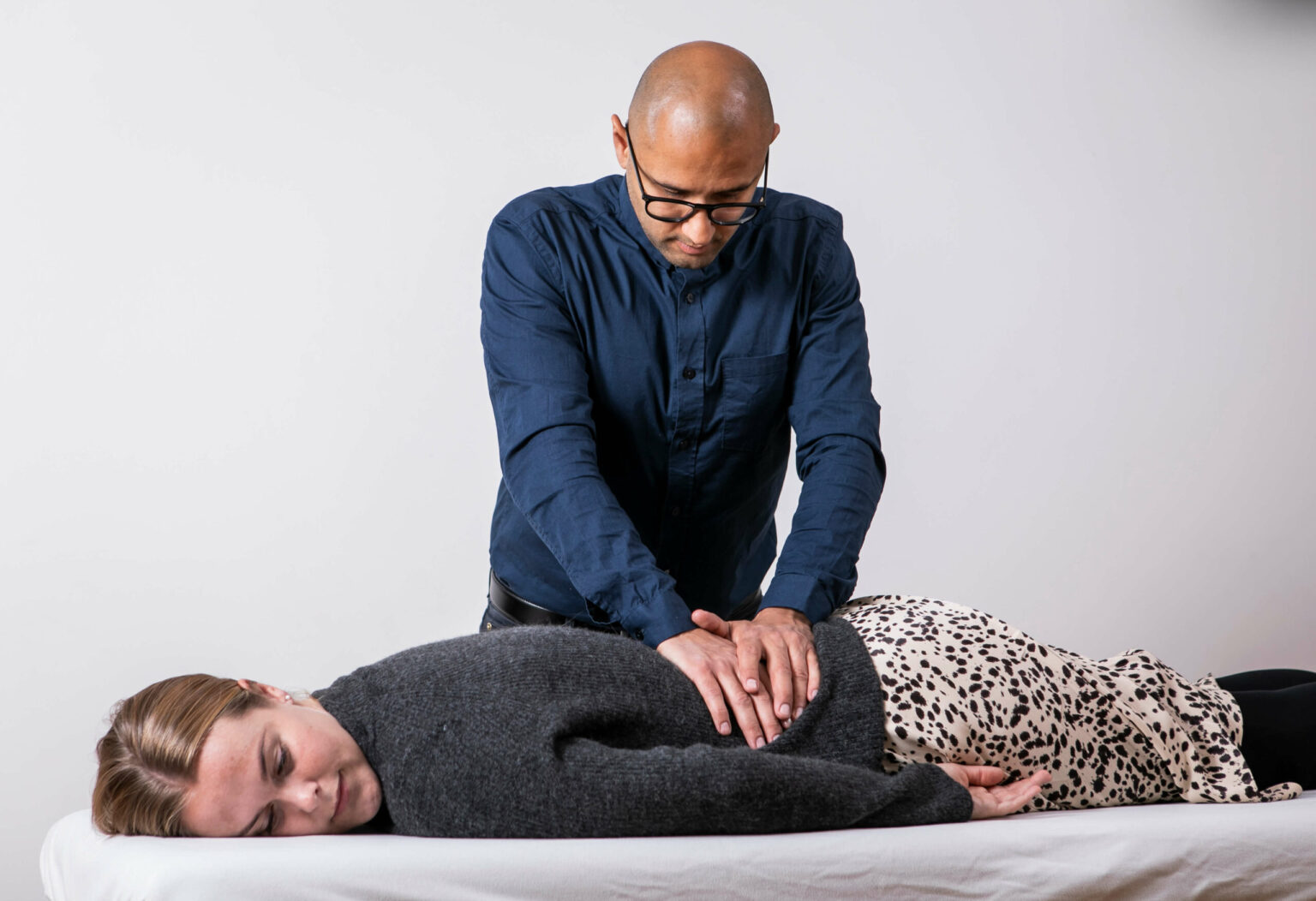
Spinal stenosis
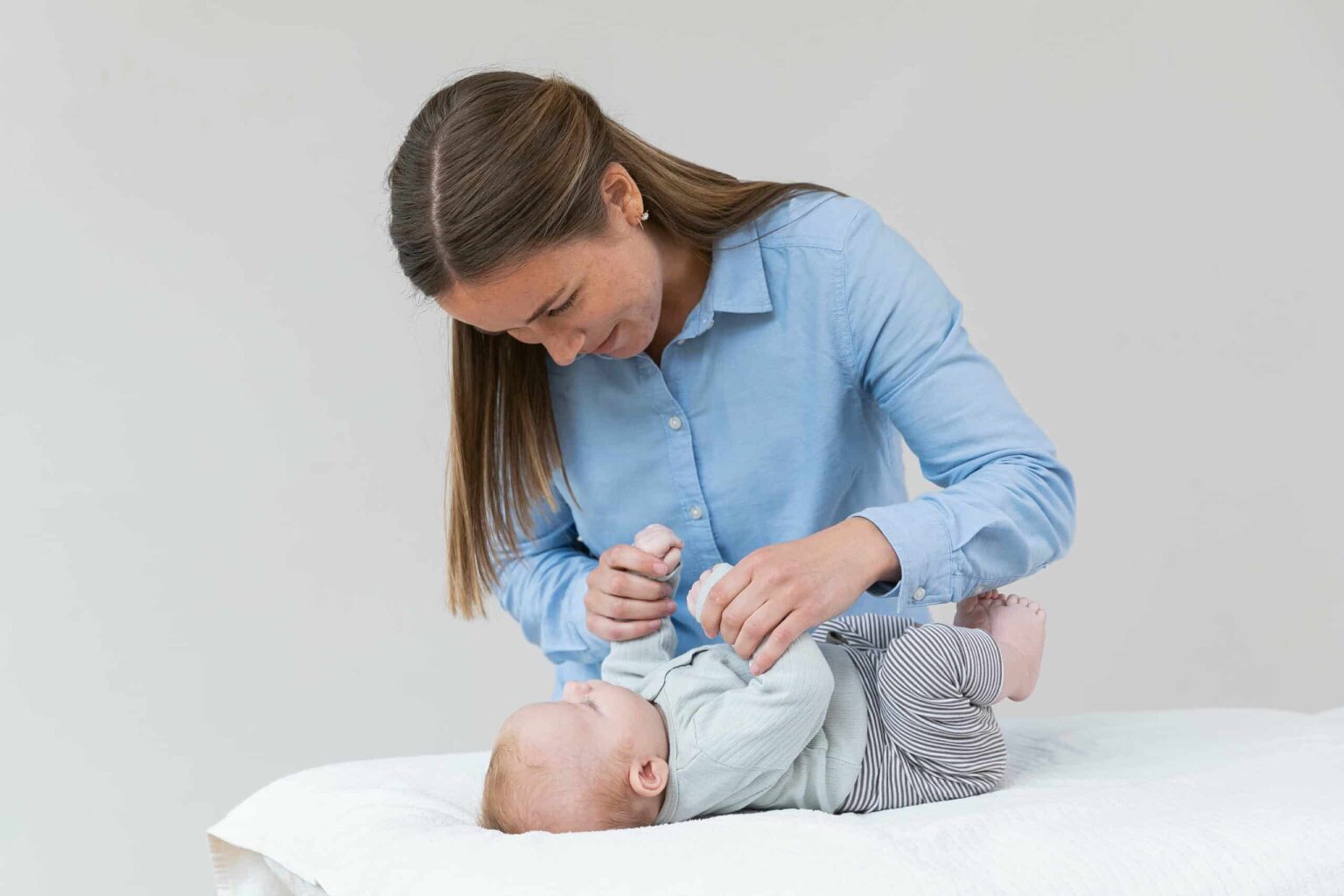
Hypermobility in babies and children
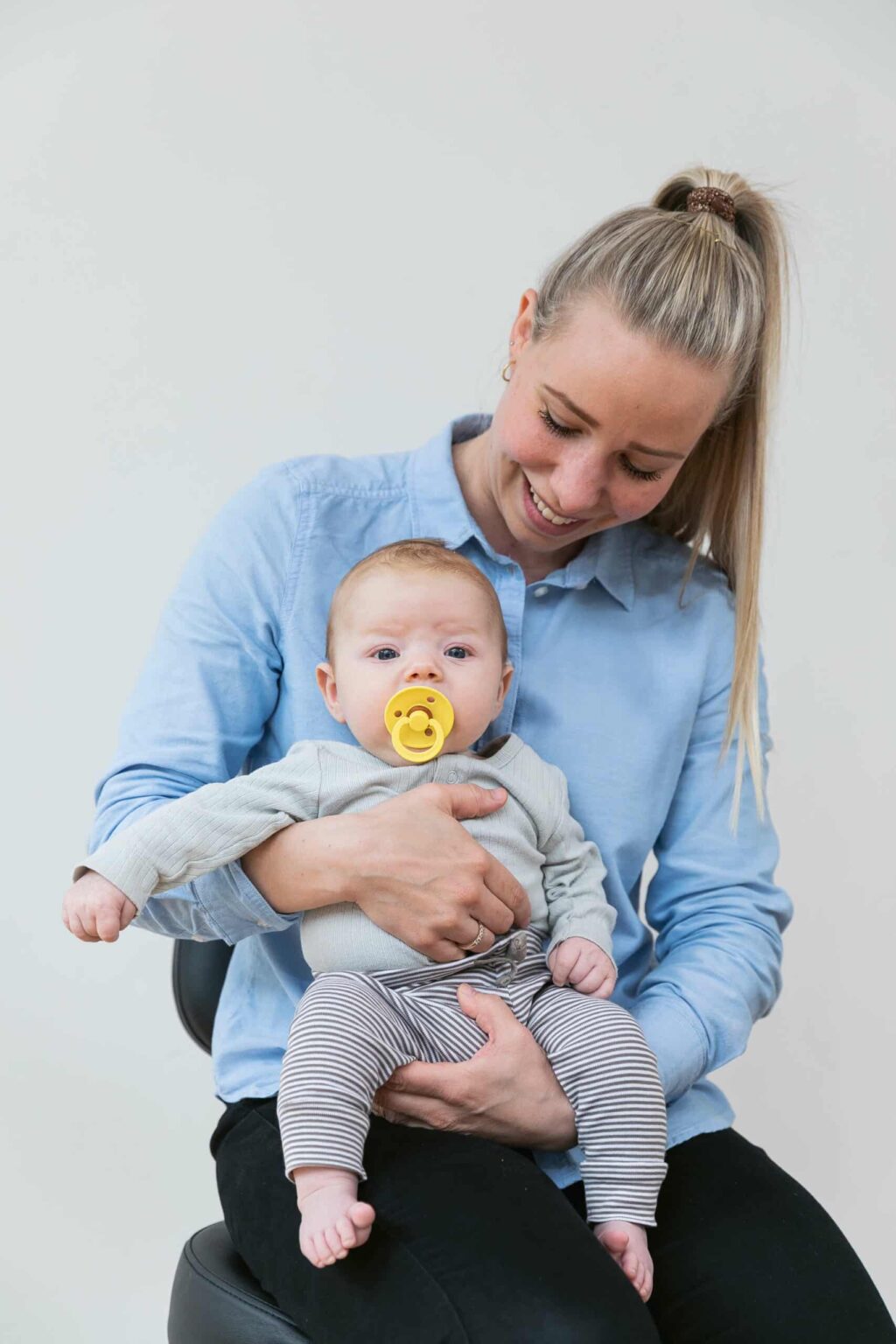
Muscle tension or imbalances in babies and children
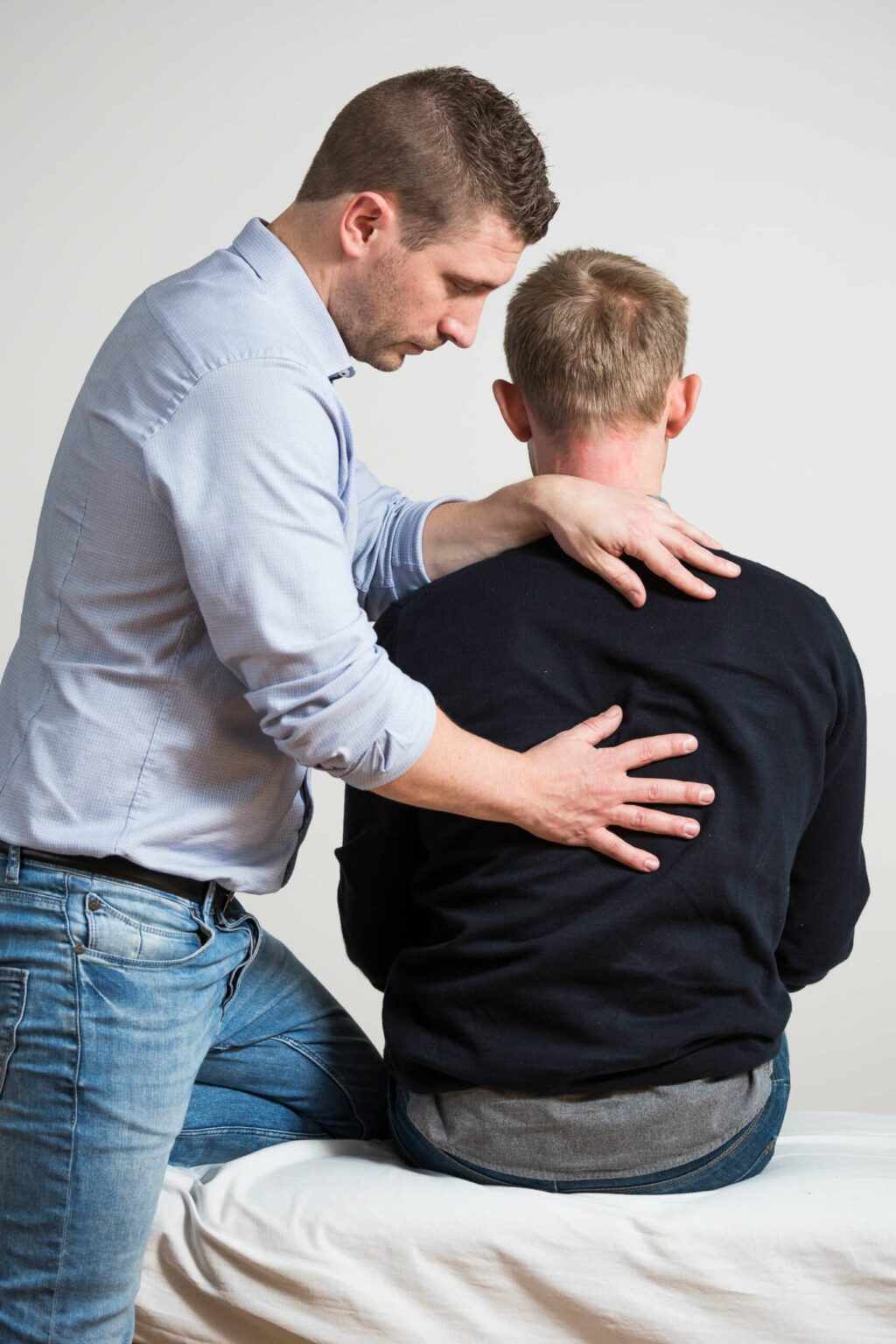
Modic Changes

Torticollis
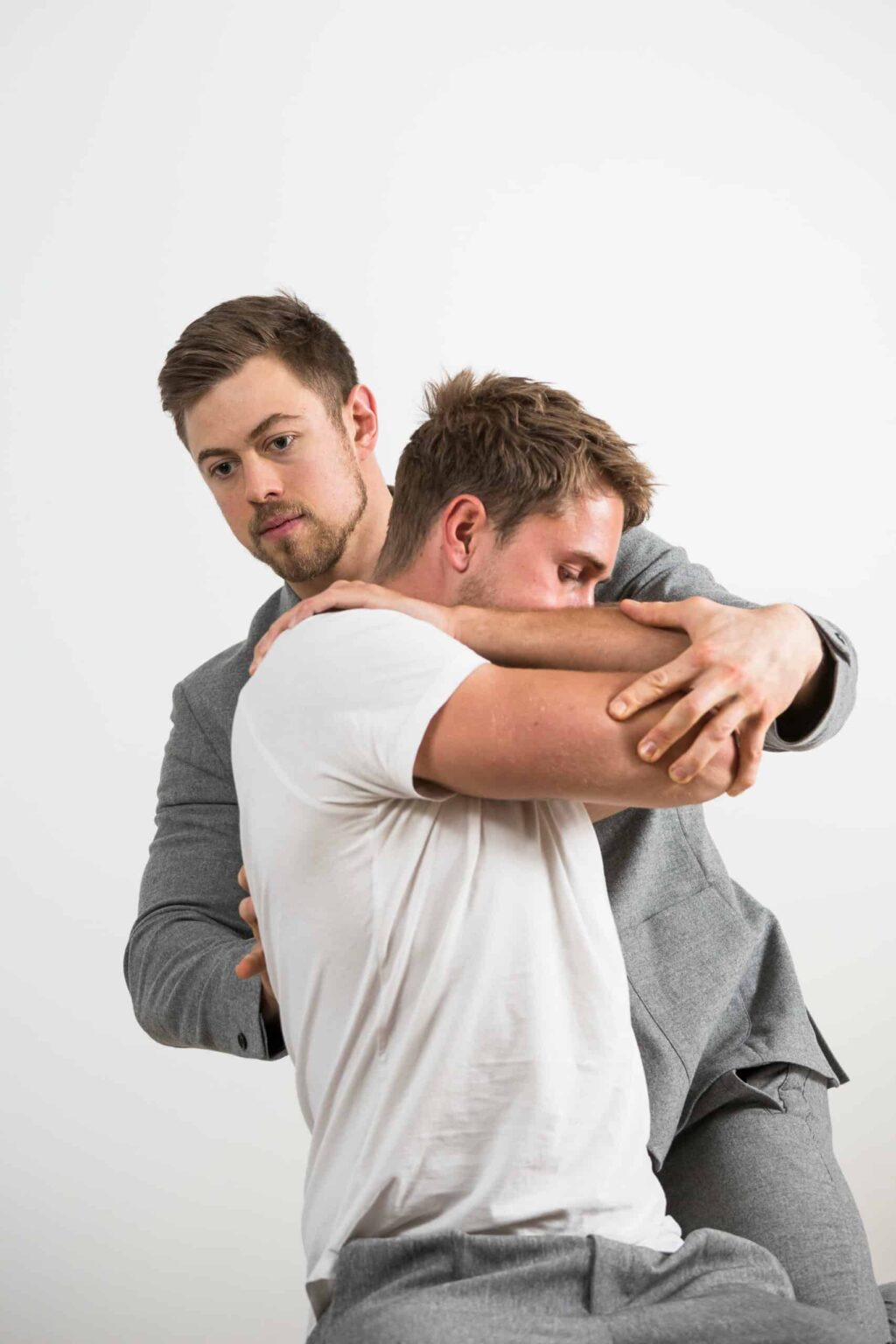
Disc herniation
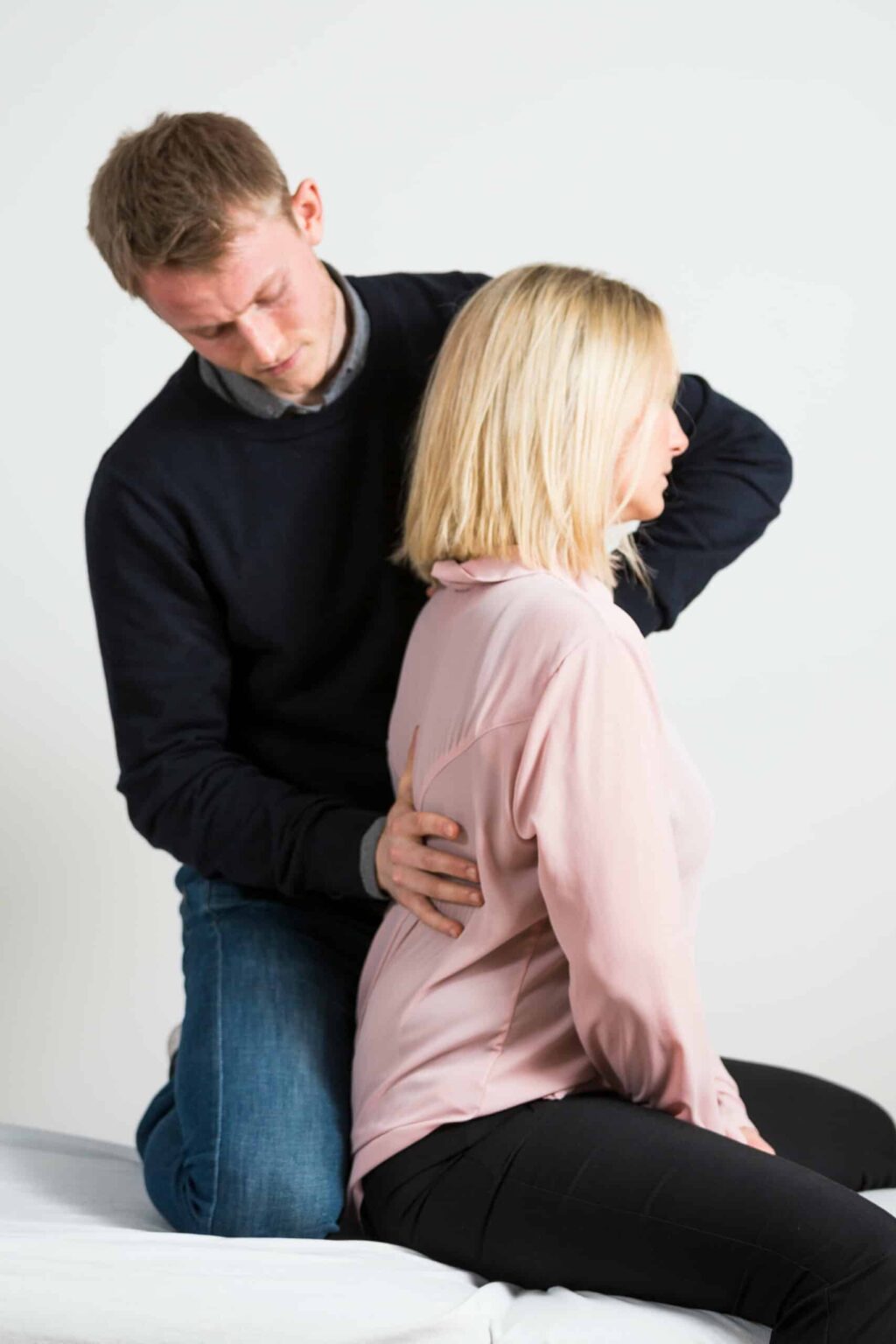
Spinal arthritis
